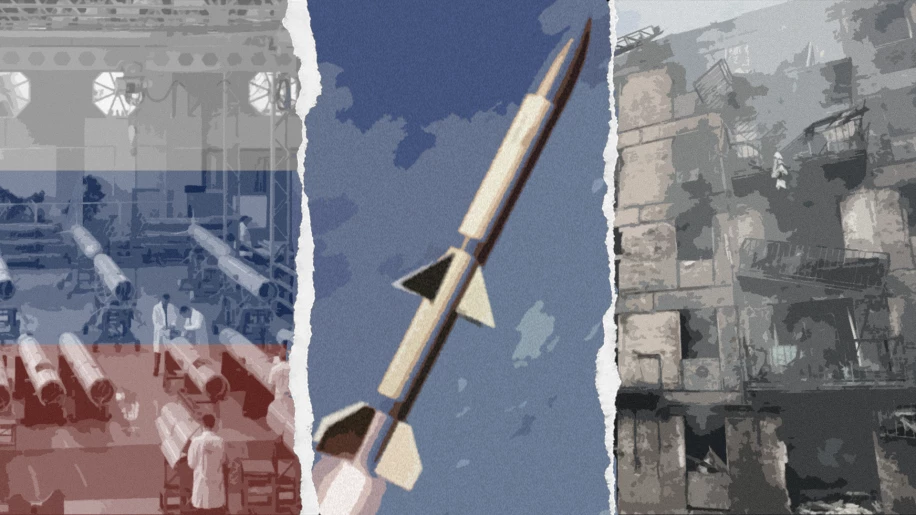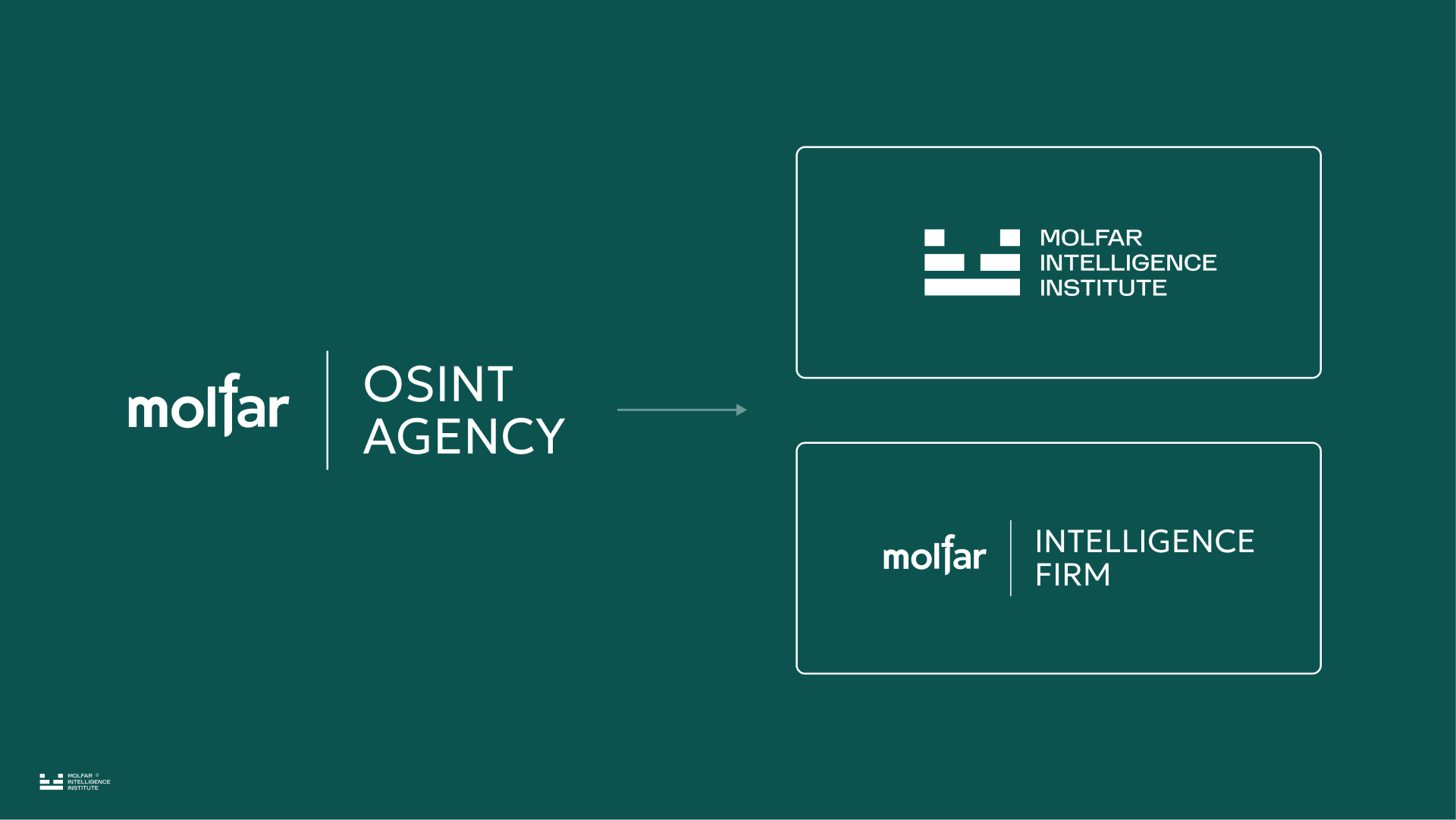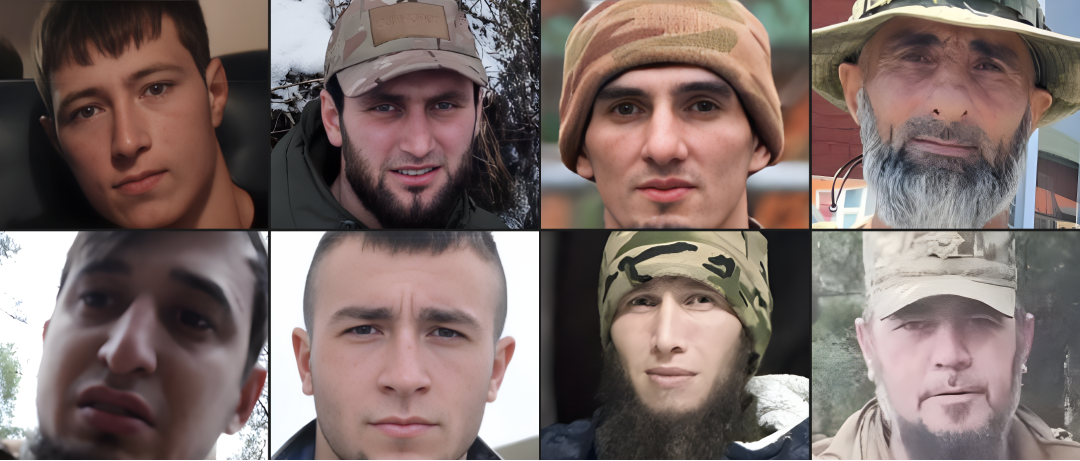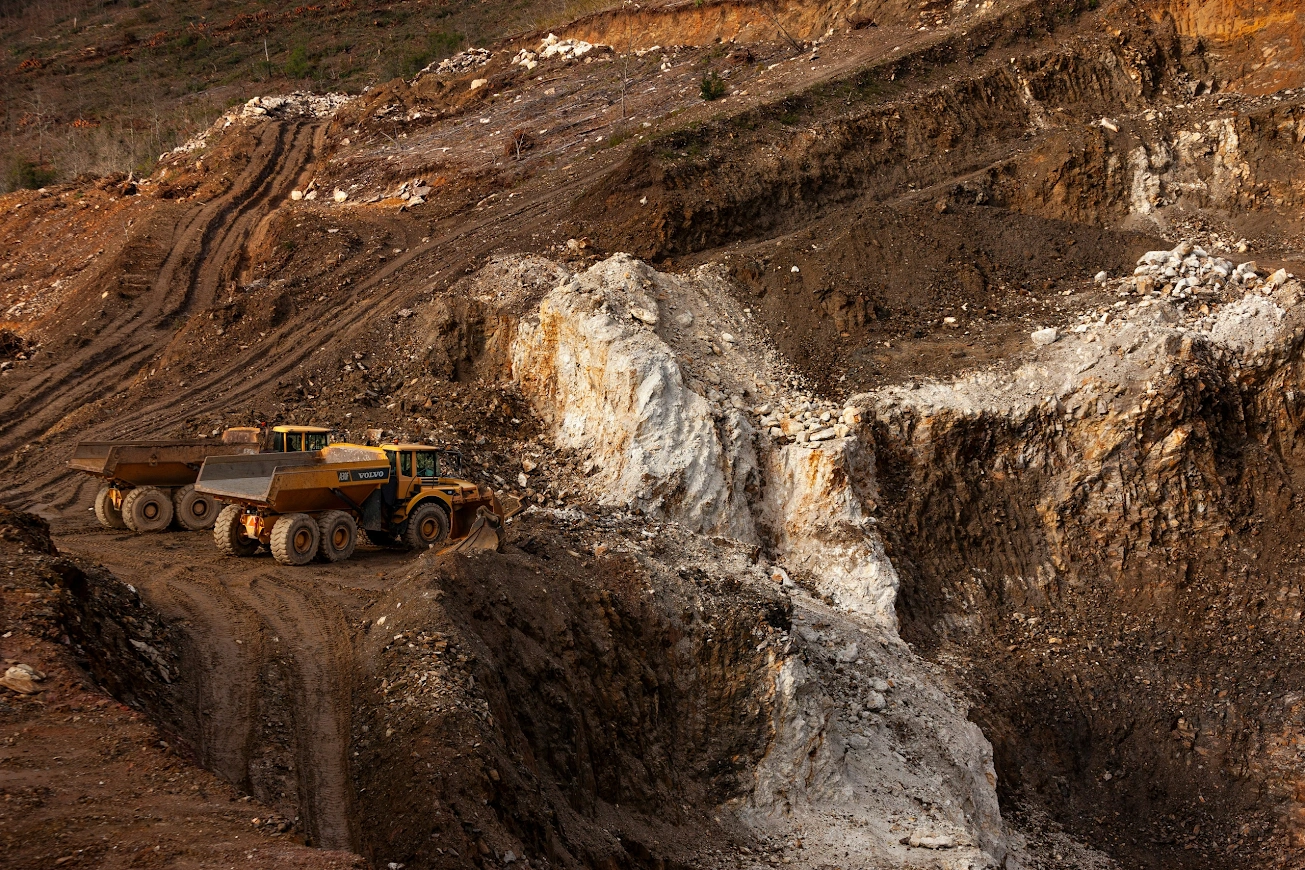Russia persists in its missile onslaught against Ukraine's civilian population. On July 26, Russia launched X-101/X-555 type missiles, colloquially known as 'cruise missiles,' at Ukraine. Ukrainian anti-aircraft forces neutralized 33 missiles, plus another 3 'Calibers.' The 'cruise missiles' are fabricated at Russia's sarcastically named 'Raduga' factory. The design office resides in the town of Dubna, in the Moscow region. In addition to X-101/555, X-69, X-59MK, and their modified versions are also produced there.
OSINT analysts from the Molfar agency have determined the location of this factory, what is produced there, and to whom the weapons were sold, and also unmasked the management and employees of “Raduga.”
"GosMKB 'Raduga' — the plant of deathly missiles
The Joint Stock Company "GosMKB 'Raduga' named after A.Ya. Bereznyak, although it bears a name that is more associated with a Soviet-era health resort, is, in fact, a factory whose specialization includes the production of a wide range of weaponry. It is the main customer for missile production at the Smolensk Aviation Plant. In May 2004, it became part of the military holding company JSC "Tactical Missiles Corporation." The founder is the Federal Agency for State Property Management (Rosimushchestvo). The main area of activity of this enterprise is the development and production of "cruise missiles" of various classes, such as "air-to-ground," "ground-to-ground," and "ship-to-ship."
The official website of "Raduga" states that the company is also engaged in the development and production of "high-tech equipment" for various sectors of the national economy (wind energy, agriculture, light industry, and medicine). Thus, the "Raduga" factory has a broad spectrum of activities, working on developing Russian technologies and equipment for various sectors of the local economy.
As of January 2023, more than 20 production buildings, warehouses, and other structures are known to exist on the premises of this enterprise.
Inventory of Destruction: What is produced at the 'Raduga' factory?
On the night of June 13, the Russians attacked Ukraine with X-101 and X-555 missiles. The air defense forces neutralized 11 out of 13 aerial targets. One of the missiles hit a residential building in Kryvyi Rih. 12 people were killed. Probably, these deadly missiles were made at the "Raduga" factory. After all, X-101 and X-555 missiles are on their production list.
According to specifications, these missiles have a deviation from the designated point of only 10 meters, proving that civilian buildings remain the priority target for the Russian army.
Now, let's look at each kind of missile this firm produces.
"Kh-69"
This missile was introduced in August 2022 at the "Army-2022" exhibition. It is a modification of the X-59MK2 missile. It is equipped with a combined navigation and automatic control system based on an inertial system, which interacts with the GLONASS and GPS NAVSTAR navigation systems. This missile can be launched from various platforms, including aircraft, ships, and ground stations. It can be a part of the armament complexes of Su-57, Su-35, Su-30MK, Su-34, MiG-35, and MiG-29K aircraft.
And indeed, it's harder to intercept. It is suitable for various military scenarios. However, judging by the stated characteristics, the X-69 has several significant drawbacks. Firstly, it can become an easy target for modern air defense systems such as NASAMS. Secondly, this missile needs more accuracy and better maneuverability.
One of the American counterparts to the "X-69" could be the AGM-158 JASSM (Joint Air-to-Surface Standoff Missile). This is also used for strikes on air, ground, and sea targets. But the AGM-158 JASSM is more accurate due to GPS and inertial navigation systems. It also can maneuver during flight, meaning the missile "survives" in combat longer. Also, the American counterpart has stealth coating, which reduces its radar visibility.
“Kh-59MK” / “Kh-59MK2” / “Kh-59MKM”
The predecessor of these missiles, Kh-59, was created in the 1970s. Of course, these modifications have been modernized. The Russians use the Kh-59MK to hit radar surface targets. It has high accuracy but maneuvers poorly during flight. The Kh-59MK2 can only strike stationary ground targets with precise coordinates - it has limited maneuverability. The Kh-59MKM was designed to hit static ground and surface targets. It is equipped with the "SNAU-59MK-02" navigation-automatic control system with satellite correction. Let's look at the modifications of this missile in detail:
"Kh-59ME":
- Used in the "OVOD-ME" missile system.
- Equipped with a navigation system, automatic control mode, and television-command guidance system.
- Maximum range: 115 km, flight speed: 600-1100 km/h.
"Kh-59MK":
- An aviation-controlled winged missile of increased range of the "air-to-ground" class.
- Destruction of radar surface targets.
- A modification of the "X-59ME" missile with a television-command guidance system.
- Maximum range: 285 km, flight speed: 900-1050 km/h.
"Kh-59MK2":
- A modified version of the "X-59MK" missile.
- Can be used for strikes on stationary ground targets with precise coordinates.
- Maximum range: 285 km, flight speed: 900-1050 km/h.
- Possible deviation from the target point: 3-5m.
"Kh-59MKM":
- Upgraded version of "X-59MK2".
- Enhanced range for hitting stationary ground and surface targets.
- Equipped with an "SNAU-59MK-02" navigation-automatic control system with satellite correction.
- Maximum range: 285 km, maximum speed: 1050 km/h at an altitude of 15 m-2 km.
All of these Kh-59 missiles can hit various targets at considerable range, and some have the capability of precise strikes according to coordinates.
“Kh-101”
This is a strategic air-to-surface cruise missile. Serial production began in 2012, but development started in 1995. It is a part of the armament complexes of Tu-160 and Tu-95MS aircraft.
This is a strategic air-to-surface cruise missile. Serial production began in 2012, but development started in 1995. It is used as part of the armament complexes of Tu-160 and Tu-95MS aircraft.
“Kh-555”
It was created based on the "Kh-55". They are equipped with satellite navigation and a TERCOM inertial navigation system. Carriers are the strategic aviation planes "Tu-95" and "Tu-160". This missile was adopted by the Russian Ministry of Defense in 2010. On November 17, 2015, these missiles were used by Russia to bomb Aleppo and Idlib in Syria. Although there is no exact data on the cost of this missile available publicly, it is assumed that its price could reach 1 million dollars.
“Kh-58E”
This type of missile is designed as an anti-radar missile. It targets radar stations (Radar Station) and air defense systems, command posts, and ground-based anti-aircraft complexes. It can be used under weather conditions and has an autonomous control system and a self-guidance mode warhead. It is used as part of the weapon complexes of aircraft such as "Su-24MK", "Su-22M4", "Su-25TK", and "MiG-25BM".
"Kh-58USHKE"
The maximum range is 76-245 km, the maximum flight speed is 4200 km/h.
This anti-radar missile has a radar homing head, navigation system, and automatic control based on a strap-down inertial navigation system. It is designed to destroy ground radar stations operating in pulse emission mode in the 1.2-11 GHz frequency range. It can be used with external aircraft mounts, a target indication system, and catapult equipment.
According to an article from December 2022, the Russian military-industrial complex cannot produce more than 40 missiles monthly.
This plant also manufactures such missile systems.
"Moskit-E" is a ship-based missile system designed to strike ships and transports of carrier strike groups and amphibious units, with a speed of up to 100 knots under conditions of radar resistance. The missile guidance system is equipped with navigation and autonomous guidance systems and a self-guidance warhead. The complex uses anti-ship, supersonic, low-altitude cruise missiles with self-guidance type "ZM-80E" or "ZM-80E1". The maximum firing range for "ZM-80E" missiles is 120 km, for "ZM-80E1" - 100 km, flight speed - 2800 km/h, salvo launch interval - 5 seconds.
"Moskit-MVE" is a modified version of the same "Moskit-E" complex with an increased firing range. The complex uses "3M-80MVE" anti-ship missiles with a combined flight trajectory - the altitude part of the flight at an altitude of ~12 km, and the final piece is 40-45 km at an altitude of 10-20 m. The maximum firing range along the combined trajectory is 240 km, and the minimum is 12 km.
"Raduga" also produces "OVOD-ME" — a missile armament complex designed to hit the stationary ground and surface targets with precise coordinates and visually visible to the launcher operator. The complex uses "Kh-59ME" guided aviation missiles, which we wrote about earlier.
What is the location of the "Raduga" plant?
Every day at 7:32 AM, a suburban train departs from Savyolovsky railway station in Moscow. It travels for 2 hours and 44 minutes. You can take this train to the city of Dubna. Almost a tourist spot on the banks of a picturesque reservoir with a very "special atmosphere." Travel guides note that an integral feature of the atmosphere of this city is the monument "rocket" at the intersection of Zhukovsky and Makarenko streets and... radiation. Here they conduct nuclear physics research. Here you can find "Raduga," which builds rockets used to kill Ukrainians.
Likely, the territory of the Design Bureau looks like this
The Design Bureau has several branches in different regions of Russia:
- Military Aerodrome: Russia, Astrakhan Oblast, Akhtubinsky district, Akhtubinsk-7, house 85141, box 30993.
- Russia, 214006, Smolensk Oblast, Smolensk, Frunze Street, 74 (address of Smolensk Aviation Factory).
- Russia, Moscow Oblast, Zhukovsky, Tupolev Street, house 2A. This address is home to FGUP "MNII Agat" (part of "Concern VKO Almaz-Antey") and the Aviation Complex named after S.V. Ilyushin (part of PJSC United Aircraft Corporation)
As well as having branches, the Design Bureau also has a representation:
- Russia, 107076, Moscow, Matroskaya TIshina Street, 23/7, building 5.
Increasing production of rockets at “Raduga”
The development of the enterprise, expansion, and modernization of production, as well as increased funding, have all been happening gradually at the plant over the past 20 years. In 2016, active construction was underway at the facility, resulting in the addition of new buildings. In March 2018, local media reported the completion of a new production facility with a total area of 4671.2 m². This facility is likely located at coordinates 56.749574, 37.119395.
Also, on the territory of the enterprise, at coordinates 56.751584, 37.125031, during the period from 2010 to 2014, a group of three administrative buildings was constructed (1, 2)
According to satellite images, at the end of 2021, before the start of the full-scale war in Ukraine, another production facility appeared on the territory of the DB, which was not mentioned in the news and was absent in Yandex images (coordinates 56.749920, 37.120997).
There is a photo of one of the production buildings on the internet. Despite the active construction, the company had a decent financial performance. As of December 2017, the net asset value of KB "Raduga" amounted to $96.5 million.
Another evidence of Russia's systematic preparation for full-scale war is that in 2018, the "Raduga" KB actively started hiring new employees. While in 2017, there were nearly 1,400 employees working there, in 2020, the average number of employees in the "science city" of Dubna, which includes the "Raduga" KB, was 12.26k, which is 2.5% less than in 2019.
In October 2022, a dormitory for the employees of the design bureau was opened at 13 Programistiv Street, building 1. It was intended to relocate 65 employees from the dormitory at 18 Svobody Street, which is planned to be renovated and used as housing for unmarried KB employees from other cities. In the same month, a two-story building at 11 Molodizhniy Street was purchased as another dormitory for the employees, and renovations were to be carried out before putting it into operation.
In November 2022, job openings were advertised on the official website of the local self-government authorities in the city of Dubna, Moscow region. Additionally, in October and November 2022, KB "Raduga" (1, 2, 3, 4) entered into leasing agreements for 8 vehicles, possibly for employee transportation purposes. As of January 2023, there were 35 vacancies available in two directions: production and mechanical engineering.
Increase in production
In January 2022, JSC "State Machine-Building Design Bureau "Raduga," named after A.Ya. Bereznyak" received permission to reconstruct one of the buildings. In March 2022, they obtained permission for the reconstruction and technical re-equipment of the production and testing base of the enterprise. The 1st stage involved the reconstruction and technical re-equipment of the laboratory for pyro-thermohydraulic tests located in production building No. M7. In June 2022, they signed a contract for the technical re-equipment of production building No. 54. In September 2022, and they received permission for the 2nd stage - the reconstruction of building No. 125. The facts of re-equipping and rearming indicate a possible increase in production. In June 2022, the "Raduga" enterprise received gratitude from the President of Russia, Putin. However, the employees themselves express negative opinions about the enterprise.
Genocidal licenses
Molfar analysts also examined the licenses held by "Raduga." As early as 2009, they obtained a permit to work in ionizing radiation sources (excluding medical activities). They installed unique fixtures that change the color of deadly doses of radiation every five minutes. There is nothing magical or "rainbow-like" about this license. It involves work with nuclear fuel and nuclear reactor management. The second option is the industrial sector, where they produce radioactive isotopes for scientific research. Finally, the third option is industrial processes, such as metallurgy, using radioactive radiation to measure material thickness and search for cracks and defects in metal structures.
In 2013, the enterprise obtained 4 more licenses: L008-00102-77/00345360, all of which are related to the development, production, testing, repair, disposal, and sale of armaments and military equipment.
Export and Supplies from "Raduga": To Whom, Where, and What?
In September 2021, an unnamed source from the military-diplomatic sphere stated that by the end of 2021, the Russian Federation will begin supplying "Kh-59MKM" missiles to its first foreign customer.
Supplies, according to 52wmb.
In 2022, "Raduga" had trade relations with the Egyptian Armament Authority for a total amount of $67.74 million:
On May 10, 2022, a deal worth $2.2 million was made, selling military-purpose products (specific details of the products are unknown).
On May 10, 2022, a deal worth $65.54 million was made, selling Category 8 military-purpose products (spare parts, assemblies, units, devices, components, equipment (including non-standard and for testing ranges), instruments, liquid rocket fuels, and their members, special, training, and auxiliary property for military-purpose products of Category 8, including bombs, grenades, torpedoes, mines, missiles, ammunition, and similar means of warfare), including military-purpose fuels, oils, and paraffin.
"Raduga’s" state orders and other contracts with
In August 2022, during the "Army-2022" exhibition, the State Machine-Building Design Bureau "Raduga" named after A.Ya. Bereznyak received a contract from the Ministry of Defense of the Russian Federation for the production of long-range air-to-ground cruise missiles. The exhibited aviation cruise missiles were likely the "Kh-69" or "Kh-59MK" / "Kh-59MK2". Additionally, the Design Bureau obtained a contract for the supply of aviation missiles capable of engaging radar stations, possibly the "Kh-58E" and "Kh-58USHKE".
From February 2013 to March 2022, the plant had 3481 procurements under the Federal Law on Procurements (223 - funds for tenders are allocated from the state budget) with a total value of $459.7 million (33.58 billion rubles). Under the 44th Federal Law (when the company gives funds independently for procurement), there were 23 procurements with a total value of $11.87 million (865.8 million rubles). Additionally, from June 2014 to May 2017, "Raduga" was a supplier for 17 state contracts with a total value of 57 million rubles, with the most prominent being for AO "Smolensky Aviatsionny Zavod" with 12 supplies amounting to 49.1 million rubles.
According to the volume of procurements in rubles conducted by KB "Raduga" from February 2013 to March 2022, the importance of procurements decreased.
“Raduga”: low salaries, outdated machinery
The salary for the 'CNC Machine Operator' position is 20,000 rubles, approximately $238.
In July 2022, a former employee of KB Raduga left (1, 2) a review stating that the equipment is outdated, the attitude towards employees is biased, and the salary is low. Reviews on the website support these claims. In August 2022, another former CNC machine operator at KB Raduga mentioned that there are tool depots in the workshops, the production preparation is 'unsatisfactory,' and the equipment needs to be updated. Additionally, he pointed out that nepotism is widespread in the company.
In October 2022, a former design engineer also mentioned that the company needs to improve its management's attitude toward employees.
Despite low wages and lack of respect from management, in December 2022, it was announced that 700 KB "Raduga" employees donated 1.5 million rubles for the needs of servicemen involved in so-called special operations and their family members.
Sanctions
Due to the war in Ukraine in 2022, the plant was subjected to sanctions by the United States, the European Union, Canada, Japan, Switzerland, and Ukraine itself as a company that is part of Russia's defense-industrial base and manufactures weapons used by Russia in attacks on the population, infrastructure, and territory of Ukraine.
The deanon on the plant's management
Sergey Anatolyevich Bogatikov - the head of the enterprise, was born on August 4, 1972.
VK (del), МойМир, ICQ, [email protected], [email protected],
+79857682205,
TIN: 770304117100,
IIAN: 02088383247,
Passport 4505193324
Appointed as CEO in July 2022.
According to "MoyMir," he studied at the Moscow Aviation Institute.
Bogatikov was appointed as the CEO of KB "Raduga" in July 2022. Before that, in 1993, the CEO was Vladimir Nikolaevich Trusov (bio) (born on May 14, 1942, passport 46 01 530640). Trusov remained in the position of scientific supervisor.
According to the insider, from 2000 to 2004, he worked at the aviation design bureau - OAO "Tupolev" and in 2000, he was the head of the Coordination Center. In 2012, he was Vice President for Economics and Finance. In 2013, he became the First Vice President - Director of Program Management. In 2014, he was appointed as the First Deputy CEO.
According to the insider, in 2002, he received income from LLC "Aviaas" (Aviaas LLC) (ceased in 2012), and from 2001 to 2003, he received payment from LLC "SP Prospect International" (Prospekt International LLC) and OAO "AERK" (AERK JSC). Both legal entities were involved in commercial activity and management consulting.
From 2019 to 2022, he served as the CEO of the developer of UAVs such as "Orion" and "Sirius" at JSC "Kronstadt" (Kronstadt JSC). At the same time, he was the head of another legal entity under Kronstadt - LLC, "Intelligent Technical Solutions" (Intelligent Technical Solutions LLC).
In January 2022, the Minister of Industry and Trade, Denis Manturov, and the Minister of Defense, Sergey Shoygu, visited the Kronstadt plant in Dubna.
Address: Moscow, Velika Bronnaya Street 2/6, Apartment 35.
Other managers:
Yeltugan Kimashevich Sizdikov — First Deputy General Director
Born in 1956.
+79162121728,
Anatoly Petrovich Utryvanov - Deputy General Director, Chief Engineer
Born on October 08, 1957.
+74959884270,
+79169013055,
Alexander Aleksandrovich Usov — Deputy General Director for Security and Personnel, Head of the Human Resources and Social Policy Department
Born on March 16, 1958.
16.03.1958
+79032560199
Valeriy Eduardovich Prokh — Advisor to the General Director
Born on December 18, 1952.
18.12.1952
+79037926750
Victor Yakovlev — Chief Designer
Born on October 20, 1962.
20.10.1962
Veniamin Ivanovich Nirkovskiy — CEO of "Raduga-15"
+79166515919
Dmitriy Ihorevich Poddubinskiy — Lead Engineer
21.10.1984
+79262727433
Natalya Anatolyevna Molchanova — Head of Procurement (1, 2, 3)
+74962199168
The Russians had been preparing for war for a long time: building that plant, expanding the range of offensive weapons, and significantly increasing the number of employees. The fact that the plant has low salaries, outdated equipment, and poor treatment and favoritism does not negate that Russia continues making weapons to kill Ukrainians. As long as this "Raduga" exists, the sky over Ukraine will remain dark and ominous.




